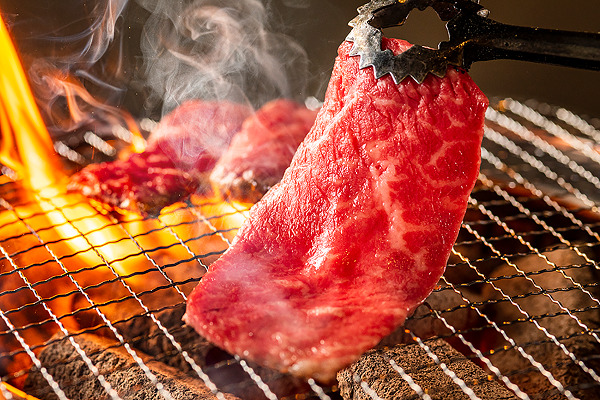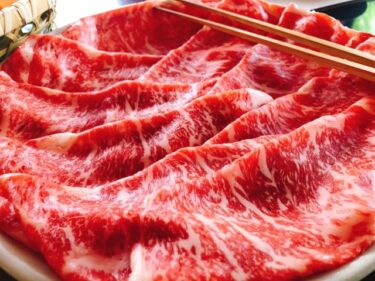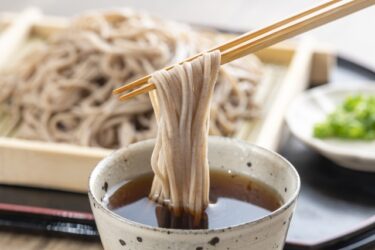It is cuisine that you eat while grilling beef etc. on the gridiron, similar to barbecue.
Japanese yakiniku was established by people from the Korean Peninsula. However, in the Korean Peninsula, it is common to eat meat that has been soaked in sauce while grilling it, whereas in Japan it is common to eat grilled meat with Tare sauce.
In yakiniku, you can mainly eat beef, but you can also eat pork, chicken, sausages, and vegetables. Yakiniku restaurants range from cheap to expensive, and are characterized by a wide range of prices.
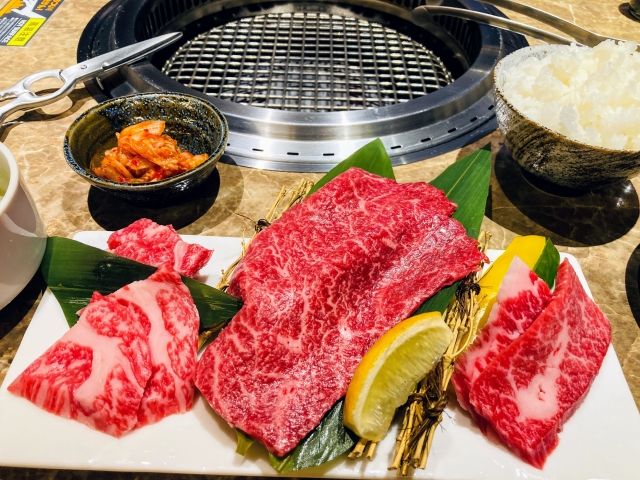
What is Yakiniku and can I eat it?
Materials of Yakiniku
Beef
| Low-gluten※ | ||||
| with Beef | with Pork |
| Restaurant |
Yakiniku is ordered by the meat part
Yakiniku is a dish in which ingredients such as beef are grilled and eaten by yourself on a gridiron. The restaurant offers raw meat, sausages, vegetables, etc., which you grill by yourself and eat with Tare sauce. Grilling on an iron net is because the meat is easy to cook and the fat is easy to remove.
Tare sauce for grilled meat varies depending on the store, but it is based on soy sauce, sake, sugar, garlic, sesame seeds, etc. In addition, salt & pepper, and salt & lemon juice may be used, so the way to eat is not decided.
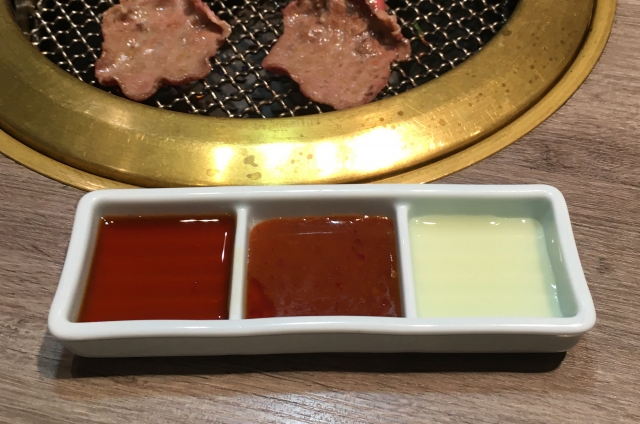
Since yakiniku was originally Korean food, some yakiniku restaurants still have Korean food such as kimchi, bibimbap, bowser, and cold noodles.
Yakiniku has various menus and is called by the part of the meat. Introducing the beef menu offered at the yakiniku restaurant.

Beef
- Kalbi: Meat attached near the ribs. It is rich in fat and soft.
- Rosu: The back meat from the shoulders to the waist is soft. loin and sirloin correspond to “Rosu”.
Beef offal
- Harami: A thin muscle on the back side of the diaphragm with visceral meat. It is rich in fat and has a strong taste.
- Sagari: Thick muscles on the rib side of the diaphragm with visceral meat. Less fat than Harami.
- Tan: It is tongue part. Slice and use as a material for grilled meat.
- Hatsu: It is heart part. Light and crunchy texture.
- Liver: It is part of the liver. Soft and rich taste.
- Mino: It is rumen. It has a crunchy and hard texture. It turns white when baked.
- Hachinosu: It is reticulum. It has bumpy irregularities like a beehive and has strong elasticity. Originally white.
- Zenmai: It is omasum. It has a crunchy texture. There is not much taste.
- Giara: It is abomasum. It is greasy and has a strong taste.
- Kotecchan: It is small intestine. It has a tubular shape. Soft and greasy. The color is white.
- Tecchan: It is large intestine. There is a striped pattern on the surface. It has less fat and is thicker. The color is white.
- Mame: It is kidney. Soft and rich taste. Similar to a lever.
Try to eat Yakiniku!
How much ?
$30~200
Where can I eat Yakiniku?
Yakiniku restaurant
Precautions when eating Yakiniku
For people with celiac disease and gluten-free
Wheat may be used as a raw material for the soy sauce used in Tare sauce. However it is estimated that the amount of gluten contained in the dish is very small because the protein contained in soy sauce is decomposed in the brewing process and not remains. There is also a way to eat without using Tare sauce.
For Muslims
Most yakiniku restaurants also sell pork, so we recommend not to go there.
Japanese writer’s comment for Yakiniku
There are various yakiniku restaurants, from cheap to expensive. Popular restaurants are cheap, but the quality of the meat is often poor, and high-end restaurants use good meat and the atmosphere is also good.
Here are some of the most popular and upscale restaurants.

Gyu-Kaku
Yakiniku restaurant chain with the largest number of stores in Japan. A 90-minute all-you-can-eat menu is available from $ 30. The side menu, drinks and desserts are also substantial, many families are there, and the holidays are crowded.
Jojoen
Famous as a high-class yakiniku restaurant. There are stores all over the country, mainly in Tokyo.

